In Arkansas, there are about 1.1 million whitetail deer. These common creatures mainly inhabit forests but may be seen in parks and neighborhoods. Whitetail deer are also the official animal of Arkansas. With so many whitetail deer, you can imagine how popular deer hunting is in the state. Deer hunting season differs each year, by weapon and zone, so always check the state’s official website before participating. Some of the largest deer ever caught in the country have been found in Arkansas, can you guess the size of the largest? Follow along to discover the largest whitetail deer ever caught in Arkansas.

What is the Largest Whitetail Deer Ever Caught in Arkansas?
Technically there are two state records for the largest whitetail deer caught. The largest whitetail deer ever caught in Arkansas scored an impressive 238 3/8. William Dooley caught this impressive non-typical whitetail deer in 1999. On the other hand, the largest typical whitetail deer ever caught scored 202 3/8. William L. Loyd shot this giant in December of 2018. According to reports, he was wearing Mossy Oak camouflage and caught this deer on a large piece of farmland.

©Tom Reichner/Shutterstock.com
About Whitetail Deer
Now that we’ve discovered the largest whitetail deer ever caught in Arkansas, we can learn more about this incredible animal! Whitetail deer are the most common deer species in the United States. They are members of the Cervidae family. This deer species is listed as Least Concern on the IUCN Red List and has a wide range. Whitetail deer also go by many different names, depending on the subspecies and region. There are at least 26 recognized whitetail deer subspecies in the world. Most are native to North America.
Appearance and Size
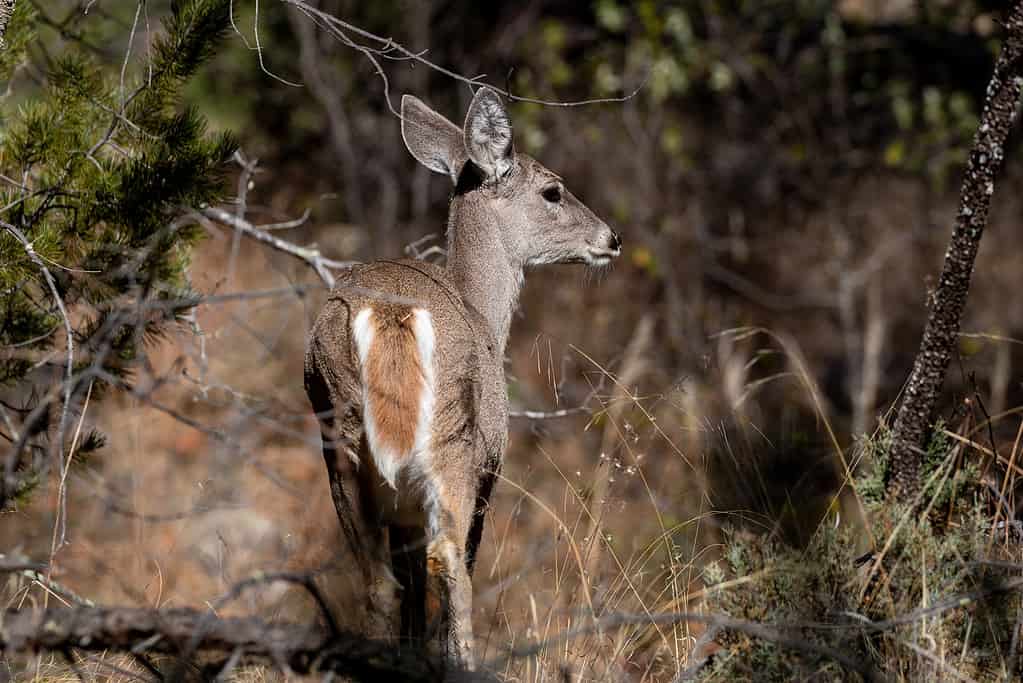
Whitetail deer in their northern range are larger than their southern cousins.
©iStock.com/equigini
Whitetail deer range a lot in appearance and size depending on the subspecies. However, generally, whitetail deer have brighter coats in the spring and summer and dark grayish-brown coats during fall and winter. This color change helps them camouflage and stay hidden from predators with the season’s changes. Whitetail deer are also easy to recognize by their tail, which is white on the underside. This white is easy to spot when whitetail deer are alarmed as they point their tails up. Whitetail deer also have large multi-branching antlers. Males regrow their anglers every year. Although some females may grow antlers, this is rare.
The average size of a whitetail deer depends on the subspecies. However, male whitetail deer are larger than females and may weigh anywhere from 150 pounds to over 400 pounds. For the most part, whitetail deer in their northern range are larger than those in the south. For example, whitetail deer in the Florida Keys weigh around 65 to 80 pounds, sometimes even less. Whitetail deer in Canada on the other hand, weigh may weigh 300 pounds or more.
Distribution and Habitat
Whitetail deer are extremely common in North America, especially in the United States. Their range is massive. You can find these deer in North America, Central America, and South America. They live as south as the high mountain terrains of the Andes. Whitetail deer have also been introduced to other parts of the world. They’ve been introduced to Puerto Rico, Cuba, Finland, Romania, and Germany.
Whitetail deer are also very flexible and adaptable animals. They live in different habitats including thick forests, rocky mountainous terrain, and brushy bottomlands. They need a lot of vegetation to use as coverage to hide from their natural predators.
Diet
Whitetail deer are generally herbivores. Their diet changes depending on the season. In winter, whitetail deer consume woody plants, twig tips, and buds. During spring and summer, they focus on eating nuts, like acorns, and fruits. Some foods that whitetail deer may eat are:
- Apples
- Wild plums
- Oats
- Mushrooms
- Grass
- Pokeweed
- Legumes
- Chestnuts
- Azaleas
Predators
Although whitetail deer have a lot of natural predators, whitetail deer are fast and use their senses to sense danger. These intelligent animals run quickly away and use coverage from trees and bushes to stay hidden from their predators. Whitetail deer may sprint in a hurry as fast as 35 mph. Common whitetail deer predators are coyotes, wolves, bears, mountain lions, humans, jaguars, and American alligators.
Young whitetail deer (fawns) are easier targets for predators. The exact type of predators also depends on the location. Another way that whitetail deer protect themselves from predators is by moving to an area around or in the suburbs. Generally, suburban neighborhoods have few problems with large predators. Whitetail deer are also eaten by a longer list of animals as carrion, including vultures, foxes, and American crows.
Other Mammals in Arkansas
Arkansas is a great place to go hunting. It has some of the best black bear and duck hunting in the region. Not only is the state known for its hunting opportunities, but also wildlife viewing. Arkansas is home to 71 naturally occurring wild mammals. Listed below are a few you may encounter and some fun facts about each!
Coyote
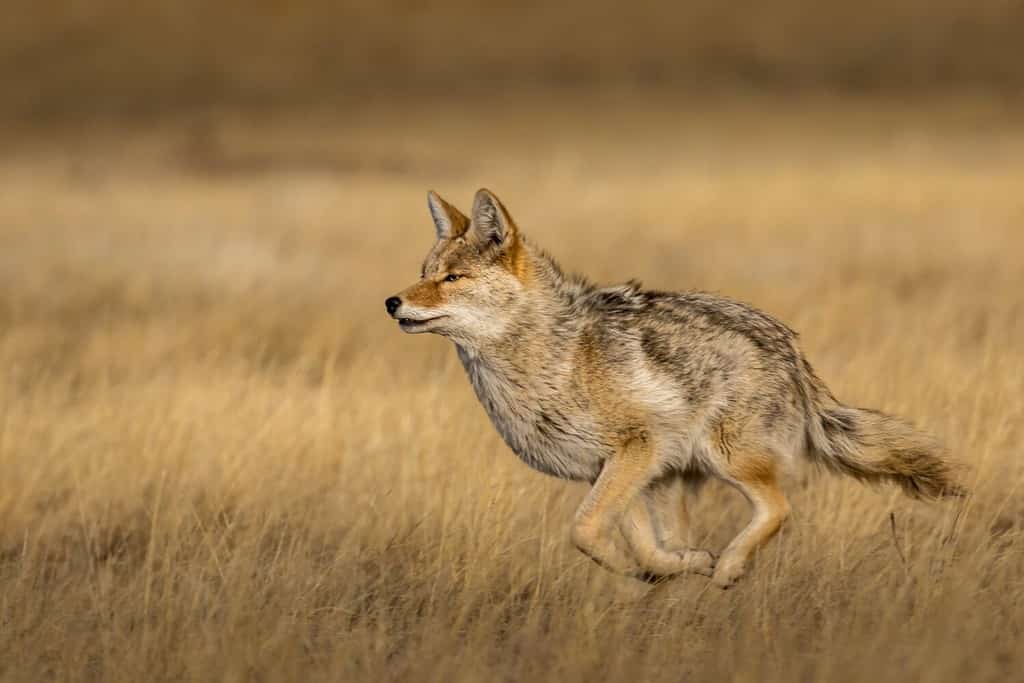
Coyotes weigh about 25 to 30 pounds.
©Dennis Laughlin/Shutterstock.com
One of the most common mammals in Arkansas is the coyote. Coyotes can be found in all counties of Arkansas. They are reddish-gray and weigh about 25 to 30 pounds. These medium-sized canines are nocturnal predators and opportunistic feeders. Coyotes may hunt live predators or eat carrion. They also have a wide range and may live in thick forests, mountainous areas, and urban zones.
Groundhog
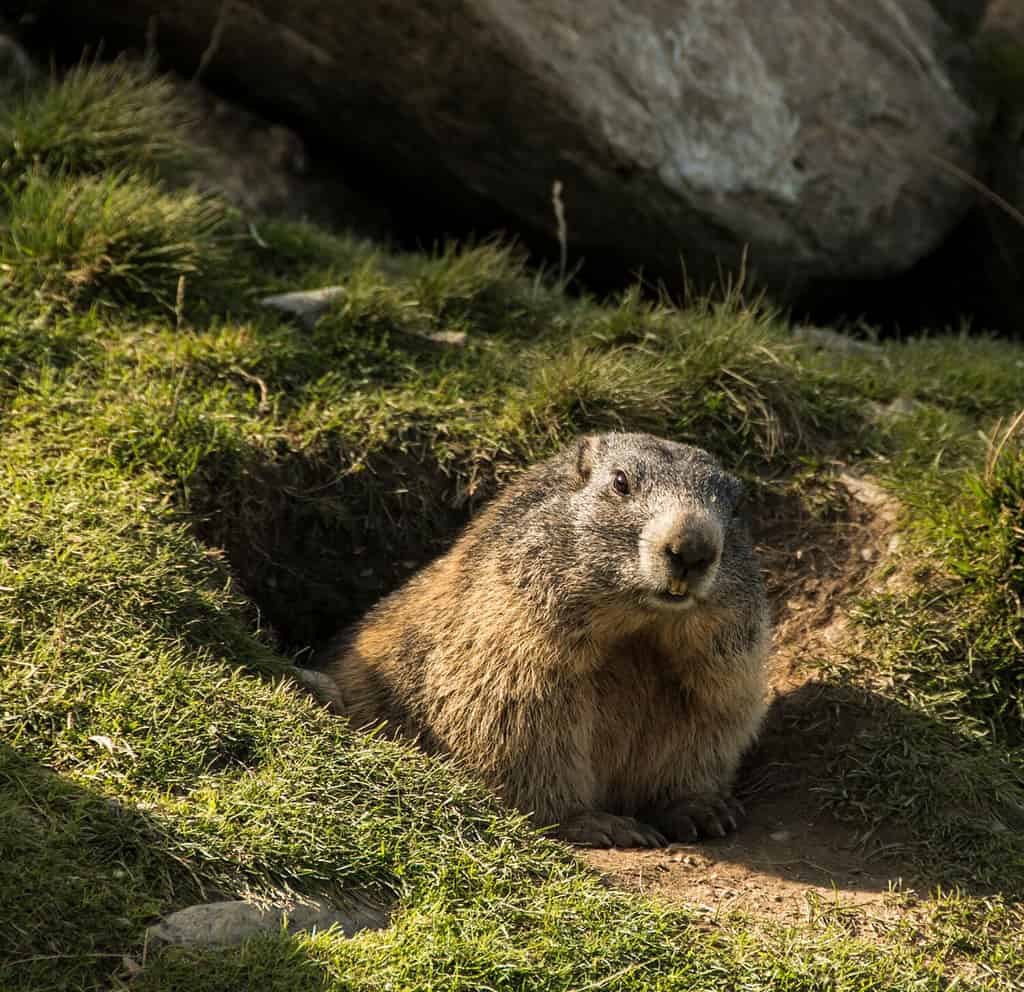
Groundhogs are common in the interior highlands of Arkansas.
©Mitch Shark/Shutterstock.com
Also in Arkansas is the groundhog. Groundhogs are stocky rodents covered in long, thick fur. They go by many names like woodchucks, marmots, and whistle pigs. It’s unlikely you’ll see these large rodents in your neighborhood unless you live in the interior highlands of Arkansas, the Ouachitas, or the Ozarks. Groundhogs are true hibernators and members of the squirrel family.
Bobcat
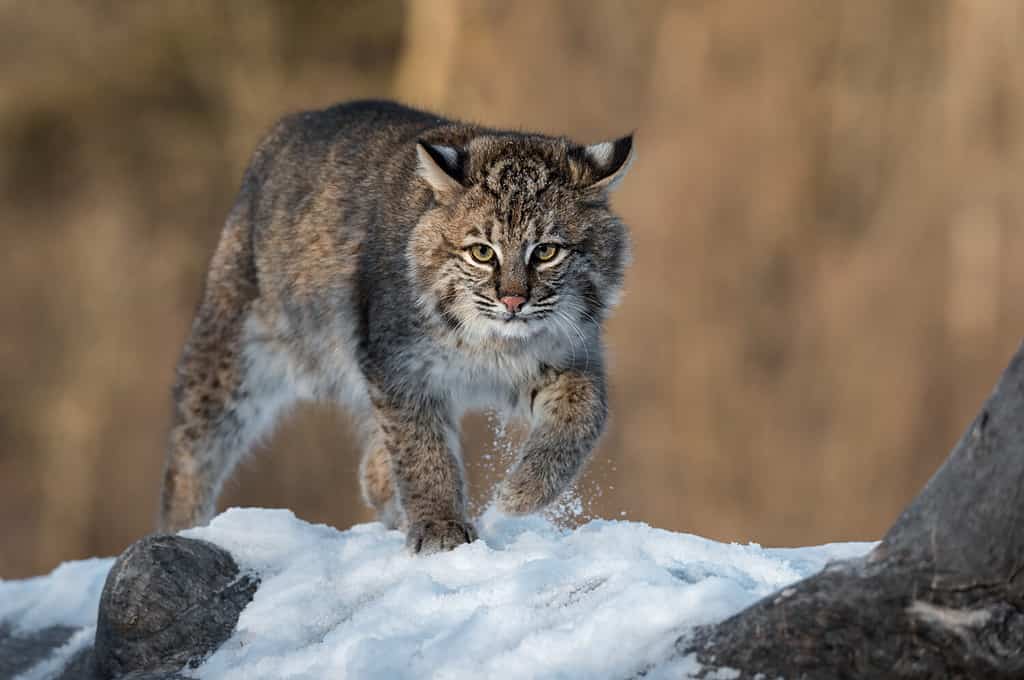
The bobcat population in Arkansas is stable.
©Holly Kuchera/Shutterstock.com
While bobcats are common across the state, it’s unlikely you’ll run across one in the wild. These medium-sized wild cats are cautious and stay clear of humans. Although the population of bobcats in the state is stable enough for a hunting season, experts can’t estimate how many live in the state.
American Mink
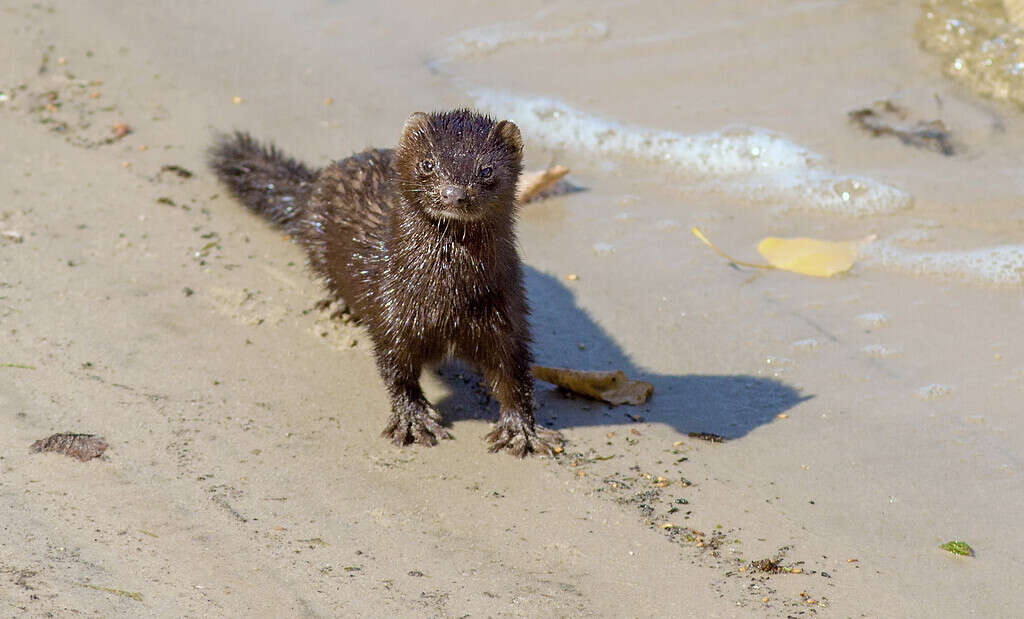
The American mink is sleek and slender, only weighing up to about five pounds.
©Wirestock/iStock via Getty Images
American minks are also present in Arkansas. They are very common and you can find them along brushy waterways. These adorable, furry animals, feed on small mammals, amphibians, fish, and insects. They are semi-aquatic and are sometimes confused with river otters. However, American minks are smaller than river otters. American minks have slender bodies and around 2 feet long. They only weigh 2 to 5 pounds.
Rafinesque’s Big-eared Bat
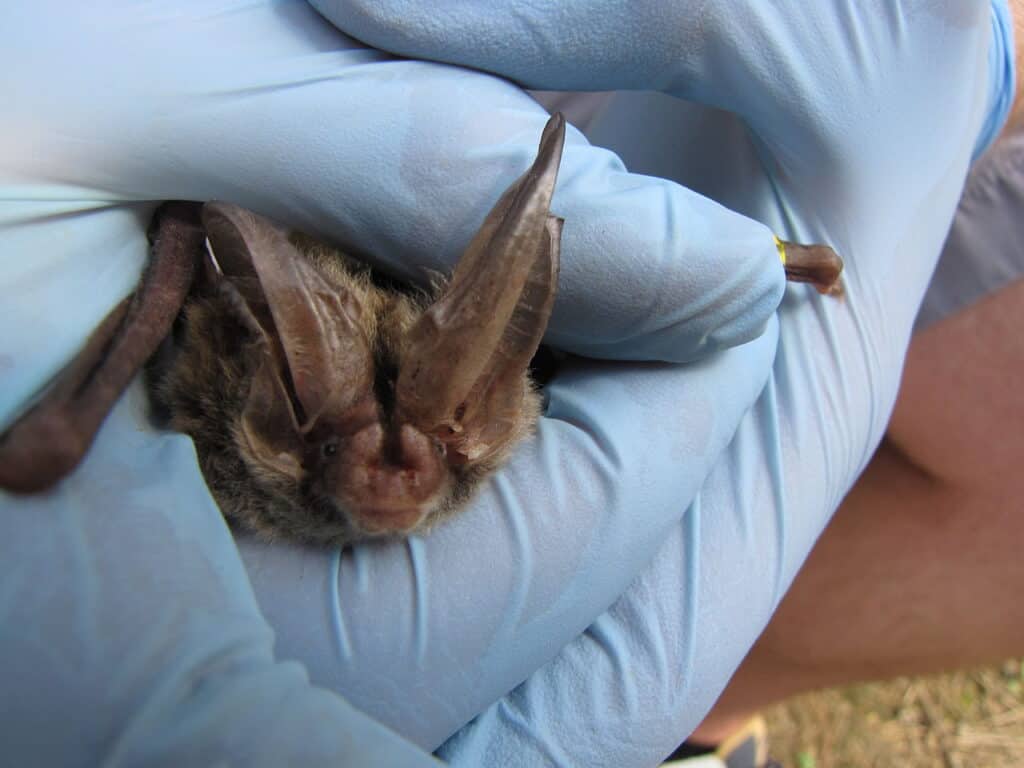
Rafinesque’s big-eared bats are listed as Least Concern on the IUCN Red List.
The next Arkansas mammal on our list is the Rafinesque’s big-eared bat, which is native to the southeastern United States. They are easy to identify by their thick and long, pointed rabbit-like ears. These incredible bats are medium-sized and listed as Least Concern on the IUCN Red List. Generally, they are about 3 to 4 inches long.
American Black Bear
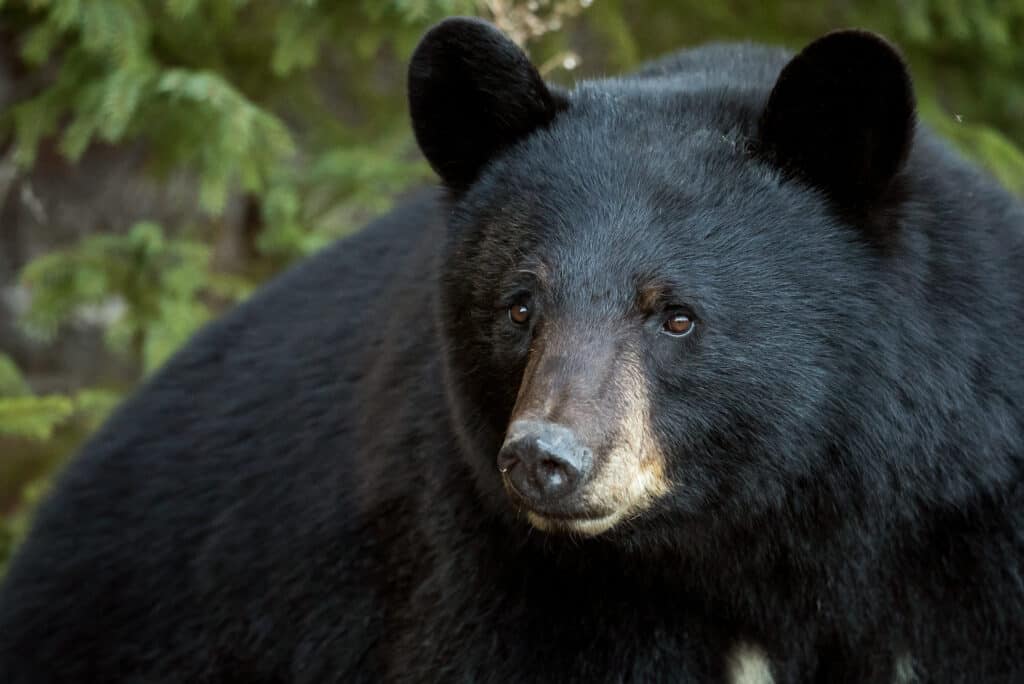
Not all North American black bears have black fur.
©iStock.com/Brittany Crossman
Last but not least is one of the largest known mammals in Arkansas, the American black bear. Despite being one of the largest mammals in the state, it’s the smallest bear species on the continent. American black bears also aren’t entirely black. Some American black bears are cinnamon-colored or have reddish fur. One particular subspecies, the Kermode bear, can have all white-yellow fur.
Thank you for reading! Have some feedback for us? Contact the AZ Animals editorial team.








